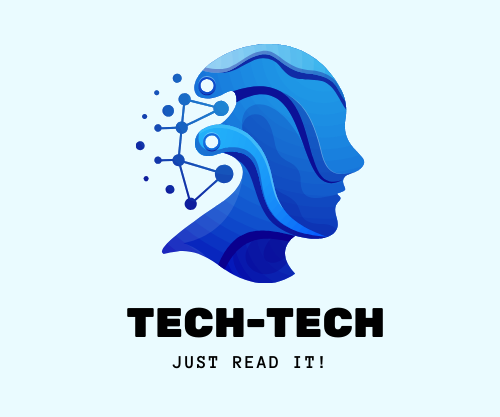Generative AI is transforming industries by enabling the creation of new, intelligent content. Whether you’re an aspiring data scientist, software developer, or just curious about AI, this detailed roadmap will guide your journey into mastering Generative AI. We’ll explore foundational concepts, essential skills, practical tools, and authoritative resources to set you up for success.
Step 1: Master Fundamental Mathematics
Generative AI relies heavily on mathematical foundations. Prioritize mastering these concepts thoroughly:
- Probability and Statistics: Essential for modeling uncertainty, making predictions, and interpreting results. Focus on concepts like probability distributions (normal, binomial, Poisson), Bayesian inference, hypothesis testing, statistical significance, and confidence intervals.
- Linear Algebra: Crucial for understanding vector embeddings, dimensionality reduction, and transformations. Dive deep into matrices, vectors, eigenvalues, eigenvectors, singular value decomposition (SVD), and applications in neural networks.
- Calculus: Important for optimizing algorithms during model training. Gain proficiency in differential calculus for understanding gradients and optimization techniques (gradient descent, backpropagation), and integral calculus for dealing with continuous probability distributions and loss functions.
Resources to help you master these fundamentals:
- Khan Academy’s comprehensive courses for beginners.
- MIT OpenCourseWare for in-depth lectures and practice.
- 3Blue1Brown’s YouTube videos for intuitive explanations.
Step 2: Deep Dive into Foundational Models
Understand key generative models powering today’s AI breakthroughs:
- GPT Models (OpenAI): Master transformers, attention mechanisms, prompting strategies, tokenization, and context windows.
- LLaMA (MetaAI): Explore smaller, efficient models, understand quantization and efficient training.
- Claude (Anthropic) and Gemini (Google): Compare alternate architectures, ethical design, alignment principles, and safety considerations.
- DeepSeek: Gain insights into its open-source ecosystem, applications, and community-driven innovations.
Recommended Resources:
- ByteByteGo’s Generative AI landscape overview.
Step 3: Build Proficiency with the GenAI Tech Stack
Leverage robust tools and frameworks critical for generative AI development:
- Programming: Python is foundational—master libraries like PyTorch, TensorFlow, and Keras.
- Prompt Engineering: Develop skills for effective prompt design, iteration, testing, and prompt optimization strategies.
- Vector Databases (VectorDB): Learn platforms like Pinecone, FAISS, Chroma, and Milvus, crucial for retrieval-augmented generation (RAG).
- Frameworks & Libraries: Deepen knowledge of Huggingface for pretrained models, LangChain for orchestration, and AutoGPT for automation.
- Cloud Platforms: Gain hands-on experience deploying models on AWS, Azure, and Google Cloud.
Recommended Reading:
- Generative AI Tech Stack by ByteByteGo.
Step 4: Train and Fine-tune Models
Customize foundational models for specific applications:
- Understand clearly the difference and use cases of fine-tuning and retrieval augmentation (RAG).
- Experiment practically with efficient fine-tuning methods like LoRA, PEFT, adapters, and parameter-efficient fine-tuning techniques.
- Regularly participate in Kaggle competitions and hands-on labs from Google Labs and DeepLearning.AI.
Insightful Resources:
- ByteByteGo’s Generative AI beginner guide.
Step 5: Explore AI Agents and Automation
AI Agents represent the frontier of autonomous, generative systems:
- Learn creating intelligent agents capable of planning, decision-making, and performing complex tasks using LangChain, AutoGPT, and other agent frameworks.
- Understand chaining prompts, recursive task execution, agent workflows, and automation practices.
Explore:
- KDnuggets Agentic AI roadmap.
Step 6: Specialize in Generative AI for Computer Vision
Expand your knowledge beyond text to visual generative models:
- Master foundational generative models like Generative Adversarial Networks (GANs), Variational Autoencoders (VAEs), and Diffusion Models.
- Gain practical experience with tools and platforms like MidJourney, DALL·E, Stable Diffusion, and Flux for professional-quality image generation.
- Explore real-world applications, limitations, and advancements in generative visual models.
Guidance:
- GUVI’s Complete Generative AI Roadmap.
Step 7: Continuous Learning and Professional Growth
The AI field evolves quickly. Stay sharp and relevant:
- Regularly follow platforms like DeepLearning.AI, Kaggle, Nvidia Learning, Google Labs, OpenAI research, and industry newsletters.
- Stay updated on ethical implications, responsible AI practices, regulatory developments, emerging trends, and evolving standards.
- Join professional AI communities, forums, and discussions to network and grow.
Valuable Insights:
- KDnuggets’ Generative AI Self-Study Roadmap.
Comprehensive List of Useful Resources:
- Learning Platforms: Khan Academy, MIT OpenCourseWare, Coursera, Udacity, DeepLearning.AI, Kaggle, Google Labs, Nvidia Learning, ByteByteGo, GUVI
- Tools and Libraries: Huggingface, LangChain, AutoGPT, PyTorch, TensorFlow, Pinecone, FAISS
- Generative AI Models and Providers: GPT, LLaMA, Claude, Gemini, DeepSeek, DALL·E, MidJourney, Stable Diffusion
- Community and Forums: GitHub, Reddit AI communities, KDnuggets, AI newsletters, Discord communities
Start today—your Generative AI journey awaits!
